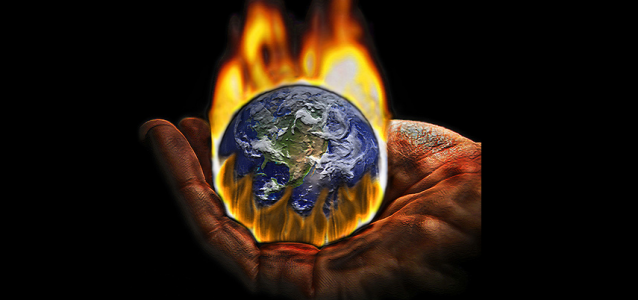The recent slowdown in global warming is becoming a hot topic among climate scientists, skeptics of human caused global warming and policy makers. Recent analyses indicate that the rate of warming in observed global temperatures has not been as high in the last decade as it was in the previous two decades. Following this, climate skeptics have been arguing that global warming has stopped after one of the strongest El Niño year of the 20th century(1997/98), while most climate scientists acknowledge the slowdown, and explain it as a result of natural climate variability asserting that this doesn’t disprove the long-term climate change trend.
The Working Group I contribution to the IPCC Fifth Assessment Report (WGI AR5) explained that each of the last three decades has been warmer than its predecessor, and the 2001-2010 decade has been the warmest on record globally since modern meteorological records began around the year 1850. But the rate of increase in average global surface temperature is less than that of previous decades. So why it is happening? And where is that extra heat going?
According to a recently published study in the scientific journal Nature climate change by Goddard (2014), the recent slow-down in global warming is a result of naturally induced climate variability associated with the negative phase of Pacific Decadal Oscillation (PDO). PDO is a pattern of warmer and cooler surface temperatures in the Pacific Ocean, similar to ENSO in character, that can last between 10 and 30 years. The paper provides further suggestive evidence related to the hiatus in global mean temperatures during the period from the 1950s to early 1960s, which was associated with the negative phase of PDO, and also the global warming acceleration from the period of mid-1970s to the mid-1990s associated with the positive phase of PDO. The paper also clarifies that it is the uptake of heat by the ocean that explains where the extra heat is going. During the negative phase of PDO (La Niña like condition) there is a net heat uptake by the ocean. The increased strength of the trade winds during the negative phase pushes more of the warmed surface waters westward. That warm water piles up in the west, pushing the volume of warm upper ocean water deeper than usual and thus storing heat below the surface.
Similarly, a newly published article at Nature Geoscience by Visbeck (2014) further explained the role of interannual and decadal variability for the recent slow-down of global temperatures by mentioning that more heat is going into the deeper oceans.Some other studies suggest that the recent slow-down of temperature is a result of a minimum solar output, and eruptions from several small tropical volcanoes, though these studies didn’t explain where the extra heat is going.
Overall, climate scientists largely agree that there is no reason to think that global warming has stopped – the slowdown is very likely to be temporary and global temperatures will soon start to increase again (i.e an increase in the rate of warming in the coming years when the tropical Pacific returns back to a warm state).
References
Goddard, L. (2014). Heat hide and seek. Nature Climate change, 4(3), 158-161.
Visbeck, M. (2014). Bumpy path to a warmer world. Nature Geoscience, 7(3), 160-161.
Stocker, T. F., Dahe, Q., & Plattner, G. K. (2013). Climate Change 2013: The Physical Science Basis. Working Group I Contribution to the Fifth Assessment Report of the Intergovernmental Panel on Climate Change. Summary for Policymakers (IPCC, 2013).

Hussen Seid
Thanks for sharing Neil. I didn’t see it.
Neil
In case you missed it there was a short essay in Nature on this topic: Pause for Thought.
http://www.nature.com/nclimate/journal/v4/n3/full/nclimate2150.html (and attached)
Précis: Climate scientists have long known pauses are likely, however that was never communicated effectively into the public space, prior to this pause. The pause presents opportunity for renewed and improved communication of climate science to Joe and Jill Blogs.